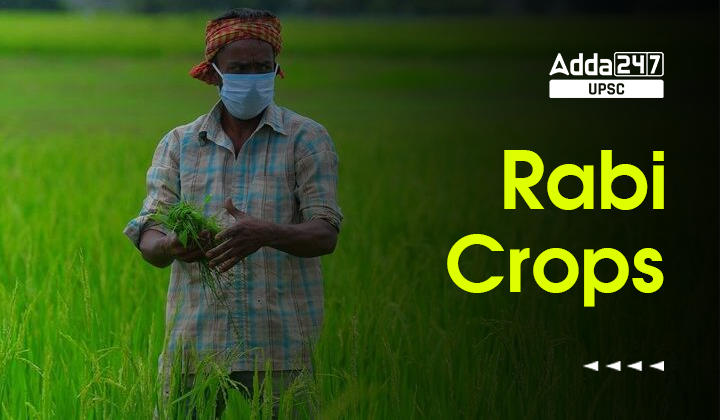Table of Contents
Rabi crops are an important category of crops cultivated in India and other South Asian countries. These crops are sown in the winter season and harvested in the spring season, usually from October to March. The term “Rabi” is derived from the Arabic word “Rabi’ah,” which means “spring.”
These crops are grown in regions that receive rainfall between 50 and 75 cm and have a winter season that is not too severe. Rabi crops include wheat, barley, oats, gram, peas, mustard, and linseed, among others. These crops are known for their high nutritional value and contribute significantly to the economy of the region.
What are Rabi Crops?
Rabi crops are a type of crop that is grown in the winter season in India and other South Asian countries. These crops are sown in the months of October to December and harvested in the months of March to May. The term “Rabi” is derived from the Arabic word “Rabi’ah,” which means “spring.” These crops are grown in regions that receive rainfall between 50 and 75 cm and have a winter season that is not too severe. The main crops grown during the Rabi season include wheat, barley, oats, gram, peas, mustard, and linseed, among others. These crops are known for their high nutritional value and contribute significantly to the food security and economy of the region.
Kharif and Rabi Crops
Kharif and Rabi are the two major crop seasons in India and other South Asian countries. Kharif crops are grown during the monsoon season, while Rabi crops are grown in the winter season. The Kharif season starts with the onset of monsoon in June and lasts until September/October. Some of the major Kharif crops include rice, maize, sorghum, pearl millet, cotton, sugarcane, and soybean, among others.
These crops are dependent on rainfall and are sown at the beginning of the monsoon season. In contrast, the Rabi season begins in October/November and lasts until March/April. The main Rabi crops include wheat, barley, oats, gram, peas, mustard, and linseed, among others. These crops are sown after the monsoon season, and their growth is primarily dependent on irrigation. The Kharif and Rabi crops contribute significantly to the food security and economy of the region.
Rabi Crops List
Rabi crops are a type of crop that is grown in the winter season in India and other South Asian countries. Some of the major Rabi crops include:
Wheat – the most important Rabi crop, grown across the country
Barley – used for animal feed and brewing
Oats – used for human consumption and livestock feed
Gram (Chickpea) – used for human consumption and animal feed
Peas – used for human consumption and animal feed
Mustard – used for oil extraction and cooking
Linseed – used for oil extraction and animal feed
Coriander – used as a spice and for medicinal purposes
Cumin – is used as a spice and for medicinal purposes
Fenugreek – used for culinary and medicinal purposes
Fennel – used as a spice and for medicinal purposes
Carrot – used for human consumption and animal feed
Spinach – is used for human consumption and animal feed
Radish – used for human consumption and animal feed
Beetroot – used for human consumption and animal feed
When are Rabi Crops Harvested?
Rabi crops are harvested in the spring season, usually from March to May. These crops are sown in the winter season, between the months of October to December, and their growth is primarily dependent on irrigation. The duration of the growth cycle of each Rabi crop varies, with some crops taking as little as 90 days, while others may take up to 200 days to mature.
Wheat, which is the most important Rabi crop, is typically harvested in April or May, depending on the region and the climate. Barley, oats, gram, peas, mustard, and linseed are also harvested during this time. The harvesting of Rabi crops is a critical process that requires careful planning and execution, as the crops need to be harvested before the onset of the summer season to prevent damage or loss.



 TSPSC Group 1 Question Paper 2024, Downl...
TSPSC Group 1 Question Paper 2024, Downl...
 TSPSC Group 1 Answer key 2024 Out, Downl...
TSPSC Group 1 Answer key 2024 Out, Downl...
 UPSC Prelims 2024 Question Paper, Downlo...
UPSC Prelims 2024 Question Paper, Downlo...




